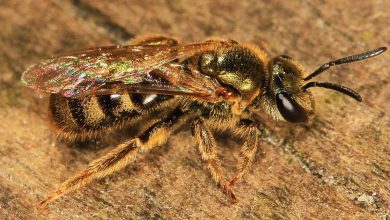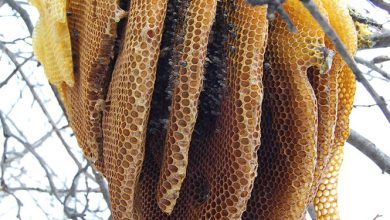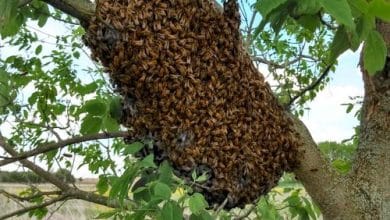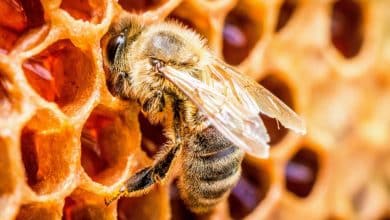Unveiling the Secret Life of a Queen Bee

Step into the world of Queen Bee and prepare to discover the enigmatic sovereign of the hive — the queen bee. This blog unravels the captivating life of the queen bee, delving deep into her critical role within the colony, her exceptional characteristics, and the secrets that make her a true regal figure among the bees.
The queen bee is not only the leader of the hive but also the mother to thousands of worker bees. She holds a central position in the social structure of the beehive, dictating its hierarchy and ensuring the survival of the colony. Understanding the intricacies of the queen bee’s life is crucial for beekeepers and scientists alike, as it allows them to better care for bee populations and contribute to their preservation.
Through this blog, readers will gain insight into the queen bee’s lifecycle, her behavior, and her unique anatomical features. They will explore the fascinating dynamics within the beehive, observing how the queen bee communicates, interacts, and establishes her dominance over the worker bees and drones. Additionally, readers will come to appreciate the significance of queen bees in maintaining the balance of ecosystems, and the importance of conservation efforts to protect their populations.
So, join us as we embark on a journey into the secret life of a queen bee, unraveling the mysteries that have captivated the world of Queen Bee. As we continue to uncover the captivating world of Queen Bee, let us celebrate and appreciate the queen bee — the true monarch of the hive. Stay tuned for further revelations from the captivating realm of Queen Bee, where remarkable creatures shape the course of life itself.
Introduction to the world of queen bees
The world of queen bees is a realm filled with wonder and intrigue. These regal figures have captivated the minds of beekeepers and scientists alike, as they hold the key to the survival and success of their colonies. The queen bee, as the leader and mother of thousands of worker bees, plays a vital role in the intricate social structure of the beehive.
Queen bees are not only known for their exceptional longevity but also for their remarkable reproductive capabilities. They possess the power to lay thousands of eggs daily, ensuring the continuation of the hive’s population. This ability, combined with their unique chemical and pheromonal signals, allows them to communicate and maintain order within the bustling hive.
The Queen Bee journey begins as a larva, carefully nurtured and fed a special diet by the worker bees. As she matures, she goes through a natural selection process, where she emerges as one of the few chosen to become queen. Once established as the ruler of the hive, the queen bee’s presence is felt in every aspect of colony life. Her pheromones regulate the behavior of the worker bees and dictate their tasks, ensuring the harmony and productivity of the hive.
The mesmerizing world of queen bees is not solely confined to the honeybee species but can also be observed in different bee species across the globe. Each species has its own unique characteristics and behaviors, adding to the diversity and complexity of the queen bee phenomenon.
Understanding the world of queen bees is essential for both beekeepers and conservationists. By studying their behaviors and biology, we gain insight into the delicate balance of nature and can develop strategies to protect and preserve these invaluable creatures. So, let us delve deeper into the secret life of a queen bee and unlock the mysteries that lie within her kingdom.
Importance of understanding the secret life of a queen bee
Understanding the secret life of a Queen Bee is of utmost importance for beekeepers, scientists, and conservationists alike. It unravels the intricate behaviors, remarkable abilities, and vital role that queen bees play in the survival and success of bee colonies.
By delving into the world of queen bees, we gain valuable insights into their reproductive capabilities, communication methods, and their influence on the overall dynamics of the hive. This knowledge allows beekeepers to effectively manage their hives, ensuring the well-being and productivity of the colony. Understanding the reproductive behavior of queen bees is crucial for successful breeding programs and colony expansion.
For scientists, studying queen bees unlocks a greater understanding of the complexities of nature. It reveals the interconnectedness of various species and ecosystems, highlighting the pivotal role that bees play in pollination and maintaining biodiversity. This insight aids in the development of strategies to protect and conserve bee populations, which are currently facing severe threats such as habitat loss, pesticide exposure, and climate change.
Conservationists recognize the significance of queen bees in maintaining healthy ecosystems. As the central figure in the beehive, the Queen Bee presence ensures the survival of the colony and the continuation of pollination services. Understanding their behaviors and biology is essential for implementing effective conservation measures, such as creating habitat corridors, reducing chemical pesticide use, and promoting bee-friendly practices.
In conclusion, understanding the secret life of a queen bee is not just a matter of curiosity; it is vital for the well-being of bee colonies, the preservation of biodiversity, and the sustainable functioning of ecosystems. By unlocking the mysteries of the queen bee, we can protect and safeguard these essential creatures and the delicate balance of nature they contribute to.
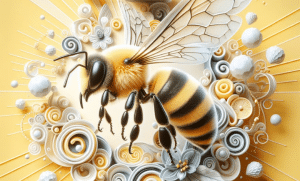
Queen Bee Lifecycle
The lifecycle of a Queen Bee is a fascinating journey marked by distinct stages and remarkable transformations. From her birth to assuming the throne of the hive, the queen bee plays a vital role in ensuring the survival and growth of the colony.
The journey begins when a queen bee larva emerges from the same genetic pool as worker bee larvae. However, it is the diet and special attention given to the larva that sets it apart and allows it to develop into a queen. The worker bees feed the larva a nutrient-rich substance called royal jelly, which triggers specific genetic changes, leading to the development of queen characteristics.
After about 16 days of growth, the queen larva undergoes metamorphosis, spinning a cocoon around herself. Inside the protective cocoon, she transforms into a fully formed adult queen bee. Once she emerges, her intricate mission begins.
One of the first tasks for a newly hatched queen is to go on mating flights. During these flights, she mates with multiple drones from neighboring colonies, storing their sperm in her body for future use. This ensures genetic diversity within the colony and increases the chances of the colony’s survival.
Once the queen returns from mating flights, she takes her place as the ruler of the hive, assuming her responsibilities as the sole egg-layer. Throughout her life, she will continuously lay eggs, averaging around 1,500 per day.
However, the lifespan of a Queen Bee is limited, usually ranging from one to five years. As she ages, her ability to lay eggs diminishes, and the workers may replace her by initiating the creation of a new queen. The old queen either leaves with a swarm or is replaced within the hive.
Understanding the lifecycle of a queen bee is essential for beekeepers, as it helps them manage their colonies effectively. By ensuring the proper development and mating of the queen, beekeepers can maintain healthy and productive hives.
In conclusion, the queen bee’s lifecycle is a fascinating journey of transformation and purpose. From humble beginnings as a larva to becoming the heart and soul of the hive, the Queen Bee role is essential for the survival and growth of bee colonies.
Stages of a queen bee’s lifecycle
A Queen Bee lifecycle can be divided into several distinct stages, each playing a crucial role in the development and survival of the colony.
The first stage is the egg stage, where the queen lays hundreds to thousands of eggs. These small, white eggs are placed in individual wax cells within the hive. The worker bees diligently tend to these eggs, providing warmth and food to ensure their proper development.
Next comes the larval stage, during which the eggs hatch and the larvae emerge. Queen bee larvae are fed a special substance called royal jelly, which is rich in proteins and nutrients. This royal jelly stimulates their growth and triggers the development of queen characteristics.
After a few days, the larvae spin individual cocoons around themselves and enter the pupal stage. Inside these protective cocoons, the transformation from larva to adult takes place. During this stage, the queen bee undergoes significant physical and physiological changes.
Finally, after about 16 days, the fully developed adult queen bee emerges from her cocoon. She is now ready to take on her role as the leader of the hive.
It is important to note that the queen bee’s development is influenced by various factors, including the diet she receives as a larva, the temperature within the hive, and the presence of other queens. These factors can determine her size, lifespan, and reproductive capabilities.
Throughout her life, the queen bee will continue to lay eggs, ensuring the growth and survival of the colony. However, as she ages, her egg-laying capacity decreases, and the workers may replace her by initiating the creation of a new queen.
Understanding the stages of a Queen Bee lifecycle is crucial for beekeepers, as it allows them to monitor and support the development of their colonies effectively. By ensuring the proper care and nutrition of the queen, beekeepers can maintain healthy and productive hives.
Roles and responsibilities within the beehive
Within the beehive, each occupant has a specific role and responsibility to ensure the overall functioning and success of the colony. While the Queen Bee holds the highest position, there are other essential roles carried out by the worker bees, drones, and even the nurse bees.
Worker bees, which are female bees, are responsible for the majority of the tasks within the hive. These workers are diligent and hardworking, performing duties such as foraging for nectar and pollen, cleaning and maintaining the hive, caring for the larvae and queen, and producing beeswax to build and repair the honeycomb. They also provide ventilation to regulate the temperature within the hive and defend it from intruders.
Drones, on the other hand, have a relatively limited role. Their main responsibility is to mate with queen bees from other colonies to ensure genetic diversity. Drones do not possess stingers and are unable to forage or produce wax. Once they have accomplished their purpose, they are usually expelled from the hive during the colder months when resources are scarce.
Nurse bees play a vital role in the early stages of the colony. They are responsible for caring for the developing larvae, feeding them royal jelly, and maintaining a suitable temperature in the nursery area of the hive. As the larvae grow and develop, nurse bees transition into their roles as worker bees.
These distinct roles and responsibilities within the beehive create a highly specialized and efficient system. Each individual bee contributes to the survival and prosperity of the colony, working together in harmony to ensure the continuity of bee populations and the production of honey and other hive products.
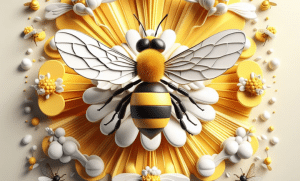
Queen Bee Behavior
Queen bees exhibit fascinating behavior within the beehive, engaging in intricate communication and displaying unique reproductive habits. Understanding their behavior is crucial in maintaining a healthy and productive colony.
Communication within the beehive is essential for the coordination and functioning of the colony. Queen bees have different ways of communicating with the worker bees. They release pheromones, chemical signals that transmit messages to other bees. These pheromones regulate various behaviors, such as maintaining unity within the colony, inhibiting the development of new queens, and promoting worker bee efficiency. Through these signals, the Queen Bee shapes the overall behavior and productivity of the hive.
Another significant aspect of queen bee behavior is their mating habits. The queen bee takes part in a single, brief mating event with several drones. She stores the collected sperm from the drones in her spermatheca, a specialized organ within her body. The stored sperm can last for several years, allowing the queen to fertilize eggs throughout her lifetime. This unique reproductive behavior ensures genetic diversity within the colony, promoting its resilience and adaptability.
Furthermore, queen bees demonstrate strong territoriality and dominance within the beehive. They have the authority to control the behavior and actions of the worker bees. If a queen bee senses the presence of a potential rival, she may engage in aggressive behavior, including fighting and stinging, to protect her position.
In summary, understanding Queen Bee behavior is crucial for maintaining a successful colony. Their intricate communication, unique mating habits, and dominance within the hive all contribute to the overall health and productivity of the bee community. By studying and appreciating the behavior of queen bees, beekeepers and researchers can better support and protect these essential pollinators.
Communication and interaction within the beehive
Effective communication and interaction are crucial for the smooth functioning of a beehive, and the Queen Bee plays a pivotal role in this process. Through a complex system of chemical signals known as pheromones, the queen bee communicates with the worker bees, directing their behavior and maintaining harmony within the colony.
The queen bee releases different types of pheromones that convey specific messages to the worker bees. One of the most important pheromones is the queen mandibular pheromone, which inhibits the development of new queens within the hive. This ensures that there is only one queen at a time, preventing conflicts and maintaining order.
Another significant pheromone is the queen retinue pheromone, which attracts and calms the worker bees, fostering a sense of unity and collective purpose. This pheromone encourages the worker bees to care for and protect the queen.
Furthermore, the queen bee’s behavior and physical presence also play a role in communication within the hive. She moves throughout the colony, inspecting cells and laying eggs, which provides visual cues for the worker bees. The worker bees respond to her movements and actions, adjusting their behavior accordingly.
In addition to pheromones and physical cues, the queen bee also communicates through sound. She produces a series of high-pitched buzzing sounds known as “piping.” Piping is believed to indicate the queen’s presence and influence the behavior of the worker bees.
Overall, the Queen Bee communication and interaction within the beehive are essential for maintaining unity, directing the worker bees, and ensuring the overall productivity and success of the colony. By understanding and respecting these signals, beekeepers can support the queen’s role and foster a thriving hive.
Reproductive behavior and mating habits of queen bees
Reproductive behavior and mating habits of queen bees are essential for the survival and expansion of honeybee colonies. A Queen Bee ability to mate and reproduce is crucial for maintaining the population and ensuring the colony’s success.
Queen bees have a unique reproductive process that involves multiple mating flights and a highly selective mating behavior. During the nuptial flight, the queen mates with numerous drones, typically between 12 to 15, although there have been cases where she mates with even more. This ensures genetic diversity within the colony and increases the chances of successful adaptation to changes in the environment.
The queen’s mating behavior is facilitated by pheromones, which attract and signal her availability to the drones. Drones from different colonies will gather at mating congregations known as drone congregation areas, where the queen flies to meet them. The drones then compete for the opportunity to mate with the queen, and only the strongest and fastest are successful.
After mating, the queen stores the sperm in a specialized organ called the spermatheca, which can hold sperm for several years. She then uses the stored sperm to fertilize eggs as needed, allowing her to lay thousands of eggs during her lifetime. This process ensures the continuity and productivity of the colony.
It is worth noting that the queen’s mating behavior is not solely for reproductive purposes. Mating also plays a role in genetic diversity, disease resistance, and colony adaptation. Understanding and preserving the Queen Bee mating habits are vital for maintaining healthy and thriving honeybee populations.
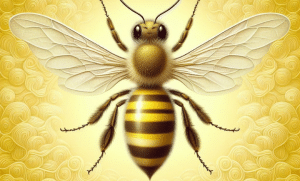
Queen Bee Anatomy
Queen Bee Anatomy plays a significant role in the life and functions of a queen bee. The queen bee, distinguished by her longer body and pointed abdomen, has several unique physical characteristics that differentiate her from worker bees and drones.
The body of a queen bee is longer, reaching past the length of her wings and legs. This elongated body allows her to lay a large number of eggs in a tight pattern within the hive. A good queen bee is known for her prolific egg-laying ability, ensuring the growth and sustainability of the colony.
Unlike worker bees, the queen bee does not possess pollen sacs on her legs, as her primary focus is egg-laying rather than foraging for pollen. Her tongue is also shorter compared to workers, indicating her dependency on worker bees for feeding.
One of the most distinctive features of a queen bee is her pointed abdomen. This structure houses the queen’s reproductive system and enables her to store and release sperm as needed to fertilize eggs. The queen mates with multiple drones during her nuptial flight, storing their sperm in a specialized organ called the spermatheca. This stored sperm can last for several years, allowing the queen to continue laying fertilized eggs throughout her lifespan.
The anatomy of a queen bee is crucial for the overall functioning and survival of the hive. Her unique physical traits enable her to fulfill her role as the primary egg-layer and reproductive individual within the colony. Understanding the Queen Bee anatomy helps beekeepers identify and manage colonies effectively, ensuring the growth and success of bee populations.
Physical characteristics and unique features of a queen bee
The Queen Bee possesses several physical characteristics and unique features that set her apart from worker bees and drones. One of the most prominent distinguishing factors is the queen’s longer body, which extends beyond the length of her wings and legs. This elongated body is essential for her role as the primary egg-layer within the hive. It allows her to lay a large number of eggs in a tightly organized pattern, ensuring the growth and sustainability of the colony.
Unlike worker bees, the queen bee does not have pollen sacs on her legs. This distinction highlights the queen’s specialization in egg-laying rather than foraging for pollen. Additionally, the Queen Bee tongue is shorter compared to worker bees, indicating her dependence on worker bees for feeding.
Perhaps the most notable feature of a queen bee is her pointed abdomen. This structure houses the queen’s reproductive system, enabling her to store and release sperm as needed to fertilize eggs. During her nuptial flight, the queen mates with multiple drones and stores their sperm in a specialized organ called the spermatheca. The stored sperm can last for several years, allowing the queen to continue laying fertilized eggs throughout her lifespan.
Understanding the physical characteristics and unique features of a queen bee is crucial for beekeepers. By identifying the Queen Bee distinctive traits, beekeepers can ensure the proper functioning and management of their colonies. The Queen Bee anatomy plays a pivotal role in the survival and success of the hive, making it essential knowledge for beekeepers and conservation efforts alike.
Comparison to worker bees and drones
Queen bees have distinct physical characteristics and unique features that set them apart from worker bees and drones. While all three castes are female, they have different roles and responsibilities within the beehive.
Compared to worker bees, queen bees have a longer body that extends beyond the length of their wings and legs. This elongated body allows the Queen Bee to lay a large number of eggs in a tightly organized pattern. Unlike worker bees, queen bees do not have pollen sacs on their legs, emphasizing their specialization in egg-laying rather than foraging for pollen. Additionally, the queen bee’s tongue is shorter than that of worker bees, further highlighting their dependence on worker bees for feeding.
In terms of behavior, queen bees have a unique and crucial role in the hive. They are the sole egg-layers and are responsible for maintaining the colony’s population. Worker bees, on the other hand, perform a wide range of tasks such as foraging for nectar and pollen, building and maintaining the hive, and caring for the queen and developing brood. Drones, which are the male bees, do not have any specific tasks within the hive and are solely responsible for mating with queen bees from other colonies.
The anatomy of queen bees differs from worker bees and drones as well. The most notable feature of a Queen Bee is her pointed abdomen, which houses her reproductive system. This allows her to store and release sperm as needed to fertilize eggs. During her nuptial flight, the queen mates with multiple drones and stores their sperm in a specialized organ called the spermatheca.
Understanding the comparison between queen bees, worker bees, and drones is essential for beekeepers in managing their colonies effectively. By recognizing the unique traits and roles of each caste, beekeepers can ensure the well-being and productivity of their hives.
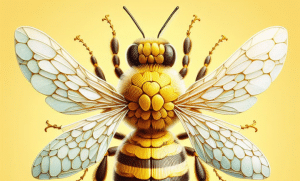
Queen Bee Hive Dynamics
Within the intricate hierarchy of a beehive, queen bees play a vital role in maintaining the social structure and ensuring the survival and productivity of the colony. The dynamics within a queen bee’s hive are fascinating and have a direct impact on the overall functioning of the bee society.
At the top of the hierarchy is the queen bee, who is the mother of all the bees in the hive. Her dominance is unquestioned, and she exerts control over the worker bees through pheromones she releases. These pheromones signal her presence and influence the behavior and development of the workers, ensuring their loyalty and productivity.
The Queen Bee dominance is maintained through a complex system of interactions and rituals. When a hive senses the need for a new queen, the workers will select a few larvae and feed them a special diet called royal jelly. This diet triggers the development of a new queen bee. Once the new queen emerges, a “queen duel” may occur, in which she fights and eliminates any rival queens to secure her position as the sole reproducer in the hive.
The Queen Bee dominance is not absolute, however. In some instances, worker bees may rebel against a weak or failing queen and replace her with a new one. This phenomenon, known as supersedure, ensures the survival of the colony by allowing for the replacement of an ineffective or declining queen.
Maintaining a healthy and productive queen bee is essential for the survival of the hive. Beekeepers closely monitor the queen’s behavior, laying patterns, and overall health to ensure the colony remains strong. They may also intervene by introducing a new queen if the existing one is not performing adequately.
Understanding the dynamics within a Queen Bee hive is crucial for beekeepers and researchers alike. By studying these dynamics, we can gain insights into bee behavior, reproduction, and colony survival, ultimately contributing to the conservation and protection of these vital pollinators.
Hierarchy and social structure within the beehive
The beehive is a complex and highly organized society, with a strict hierarchy and social structure. At the top of this hierarchy is the Queen Bee, who is the undisputed ruler of the colony. She holds a position of utmost importance, as she is responsible for the reproduction and survival of the hive.
Below the queen bee are the worker bees, who make up the majority of the hive. They are responsible for various tasks such as foraging for food, taking care of the young, building and maintaining the hive, and protecting the colony. The worker bees are all female and are sterile, meaning they cannot lay eggs. They defer to the queen bee and carry out her commands.
Within the worker bee population, there is also a hierarchy in terms of age and experience. Older workers have more responsibilities and are often tasked with more demanding jobs, such as guarding the entrance of the hive or foraging for nectar and pollen.
Another important group within the beehive is the drones. Drones are male bees whose sole purpose is to mate with the queen bee. They do not have stingers and do not participate in any other tasks in the hive. Once they fulfill their reproductive role, drones are often expelled from the hive during the winter months, as they consume valuable resources without contributing to the survival of the colony.
The hierarchy and social structure within the beehive are maintained through chemical communication and pheromones. The queen bee releases pheromones to assert her dominance and to influence the behavior and development of the worker bees. These pheromones help create a cohesive and efficient society where every bee has a specific role and contributes to the overall functioning of the hive.
Understanding the hierarchy and social structure within the beehive is essential for beekeepers and researchers alike, as it provides insights into the intricate workings of these fascinating creatures. By studying and respecting the natural order within the beehive, we can better care for and protect these vital pollinators and ensure the health and productivity of their colonies.
Factors influencing the queen bee’s dominance and longevity
Several factors play a crucial role in influencing the dominance and longevity of a queen bee. These factors impact her ability to lead the colony and ensure its survival.
Genetics play a significant role in determining the potential dominance and longevity of a queen bee. The queen bee’s genetic makeup determines her physical characteristics, reproductive capabilities, and overall fitness. Queens from strong and healthy genetic stock tend to have a higher chance of becoming dominant and living longer.
Nutrition and diet also have a profound impact on a queen bee’s dominance and longevity. A queen bee needs to be well-nourished to produce a large number of eggs and maintain her reproductive abilities. A diet rich in pollen and nectar provides the necessary nutrients for optimal queen development and performance.
Environmental conditions can also affect the dominance and longevity of a queen bee. Extreme temperatures, humidity levels, and exposure to pesticides or pollutants can stress the queen bee and affect her health and overall lifespan. Providing a suitable habitat with favorable environmental conditions is essential for the queen bee’s well-being.
The presence of a well-organized and efficient worker bee population is crucial for the queen bee’s dominance and longevity. Worker bees support the queen by taking care of her needs, defending the colony, and performing various tasks. A strong and healthy worker bee population ensures the queen’s well-being and allows her to focus on her primary role of reproduction.
Lastly, the behavior and interactions of the worker bees within the hive can influence the queen bee’s dominance. Worker bees communicate with one another through chemical cues, and their response to the queen’s pheromones can determine her level of dominance. A harmonious and cooperative worker bee population enhances the queen’s dominance and promotes the overall stability of the colony.
Understanding and managing these factors is crucial for beekeepers and researchers to ensure the dominance and longevity of queen bees. By providing optimal nutrition, maintaining a suitable environment, and promoting a healthy worker bee population, beekeepers can support the success and survival of the queen bee, leading to thriving colonies and strong bee populations.
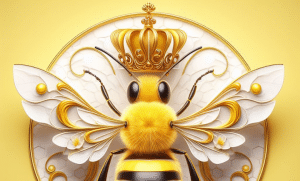
The secret life of a queen bee is a captivating journey into the intricacies of their behaviors and remarkable abilities. Understanding the enigmatic world of queen bees goes beyond mere fascination; it holds immense significance for bee conservation. Queen bees play a vital role in the intricate tapestry of nature, and as stewards of the environment, it becomes our responsibility to protect and ensure the survival of these essential figures.
The queen bee’s role as the leader and reproductive powerhouse of the colony is instrumental in maintaining the stability and success of the entire bee population. Her ability to communicate and interact with worker bees, her unique reproductive behavior, and her physical characteristics all contribute to the harmony and productivity of the hive.
The importance of queen bees extends beyond the boundaries of the bee colony. They are key players in the pollination process, crucial for the reproduction of many plant species. Their presence and successful reproduction directly impact the biodiversity and health of ecosystems.
Conservation efforts must be implemented to protect queen bee populations. This includes promoting sustainable Queen Bee practices, reducing the use of pesticides and other harmful chemicals, and providing suitable habitats with diverse sources of nectar and pollen. By safeguarding queen bees and their colonies, we are ensuring the pollination of our crops, the preservation of natural habitats, and the overall well-being of our environment.
In conclusion, delving into the secret life of a queen bee not only reveals a world of complexity and wonder, but it also underscores the importance of their existence. By understanding and protecting queen bees, we are safeguarding the delicate balance of our ecosystems and securing the future of our planet for generations to come.
Significance of queen bees in bee populations and ecosystems
Queen bees play a significant role in the survival and success of bee populations and ecosystems. As the reproductive powerhouses of the colony, they are essential for the continuation of the bee population. The queen bee is responsible for laying eggs, which ultimately give rise to the worker bees and drones. Without a queen bee, the colony would eventually die out.
The presence of queen bees is crucial for the overall health and productivity of ecosystems. Through their ability to pollinate, they contribute to the reproduction of numerous plant species. Pollination is a vital process that allows plants to reproduce and produce fruits and seeds. It supports biodiversity by ensuring the survival of various plant species and provides essential resources for other organisms in the ecosystem.
Furthermore, queen bees contribute to the stability and organization of the colony. They are responsible for maintaining the social structure and hierarchy within the beehive. The pheromones that queen bees produce help regulate the behavior and activities of the worker bees. These interactions ensure the smooth functioning of the colony, including tasks such as foraging, nest building, and defense.
The loss or decline of queen bees can have detrimental effects on bee populations and ecosystems as a whole. It can disrupt the delicate balance between pollinators and plants, leading to a decline in plant diversity and overall ecosystem health. Therefore, conservation efforts focused on protecting and preserving queen bees are crucial for the long-term sustainability of ecosystems.
In conclusion, queen bees possess immense significance in bee populations and ecosystems. Their reproductive abilities, role in pollination, and contribution to colony stability highlight their indispensability. By conserving queen bees and their habitats, we are not only ensuring the survival of bee populations but also safeguarding the health and biodiversity of our ecosystems for future generations.
Conservation efforts and protecting queen bee populations
Conservation efforts aimed at protecting queen bee populations have become increasingly important in recent years. The decline in bee populations worldwide has raised concerns about the long-term sustainability of ecosystems and the vital process of pollination. Recognizing the significance of queen bees in maintaining healthy bee populations, scientists, beekeepers, and conservation organizations have implemented various strategies to safeguard their populations.
One key approach to protecting queen bees is to focus on habitat conservation. Creating and maintaining diverse habitats that provide ample food sources and nesting sites for bees is crucial. This includes preserving wildflower meadows, planting bee-friendly gardens, and reducing the use of pesticides that can harm bees.
Another strategy involves promoting sustainable Queen Bee practices. Beekeepers play a critical role in ensuring the health and survival of queen bees. By implementing best management practices, such as proper hive management, disease prevention, and responsible use of Queen Bee equipment, beekeepers can support the well-being of queen bees and their colonies.
Collaboration between beekeepers, scientists, and policymakers is also essential. By sharing knowledge and expertise, they can develop effective conservation strategies, monitor Queen Bee populations, and advocate for policies that promote bee-friendly practices, such as banning harmful pesticides or providing incentives for habitat conservation.
Education and public awareness initiatives are vital for engaging the wider community in bee conservation efforts. By educating people about the importance of queen bees and the role they play in ecosystems, individuals can make informed choices in their daily lives to support bee populations. This can include planting bee-friendly gardens, avoiding the use of chemical pesticides, and supporting local beekeepers and their honey products.
In conclusion, protecting Queen Bee populations is crucial for the preservation of ecosystems and the sustainability of pollination. Conservation efforts focused on habitat conservation, sustainable Queen Bee practices, collaborative partnerships, and public awareness can collectively contribute to the protection of queen bees and ensure the continued health and vitality of our natural world. Investing in their protection is not only a commitment to safeguarding these fascinating creatures but also an investment in the future of our ecosystems.
Thank you for delving into the world within the hive with us as we explored the intriguing life of a Queen Bee. From their pivotal role in the bee colony to the symbolic representations in literature, there is so much to uncover and appreciate about these regal insects. If “Unveiling the Secret Life of Bees” has piqued your interest and you’re seeking a deeper understanding of the Queen Bee influence, both in nature and as a metaphor in our culture, consider giving Amy Lignitz Harken’s book a read for further insight. We would be thrilled to hear your thoughts on the book and how it may have changed your perspective on the Queen Bee. So please, share your reflections and any newfound wisdom you have gained on this fascinating subject.



